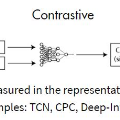Link prediction task aims to predict the connection of two nodes in the network. Existing works mainly predict links by node pairs similarity measurements. However, if the local structure doesn't meet such measurement assumption, the algorithms' performance will deteriorate rapidly. To overcome these limitations, we propose a Line Graph Contrastive Learning (LGCL) method to obtain multiview information. Our framework obtains a subgraph view by h-hop subgraph sampling with target node pairs as the center. After transforming the sampled subgraph into a line graph, the edge embedding information is directly accessible, and the link prediction task is converted into a node classification task. Then, different graph convolution operators learn representations from double perspectives. Finally, contrastive learning is adopted to balance the subgraph representations of these perspectives via maximizing mutual information. With experiments on six public datasets, LGCL outperforms current benchmarks on link prediction tasks and shows better generalization performance and robustness.
翻译:链接预测任务旨在预测网络中两个节点的连接。 现有的工程主要通过节点对相类似的测量来预测连接。 但是, 如果本地结构不能满足这样的测量假设, 算法的性能将会迅速恶化。 为了克服这些局限性, 我们提议了一条线形图表对比学习( LGCL) 方法来获取多视图信息。 我们的框架通过 hhhh 子图采样, 以目标节点对为中心。 在将抽样子图转换成线形图后, 边缘嵌入信息可以直接获取, 链接预测任务可以转换成一个节点分类任务 。 然后, 不同的图形组合操作员会从双重角度学习演示。 最后, 通过对比性学习来平衡这些视角的子表达方式, 以最大化相互信息 。 在六个公共数据集的实验中, LGCL 超越了当前连接预测任务的基准, 并显示更好的概括性表现和稳健性 。



